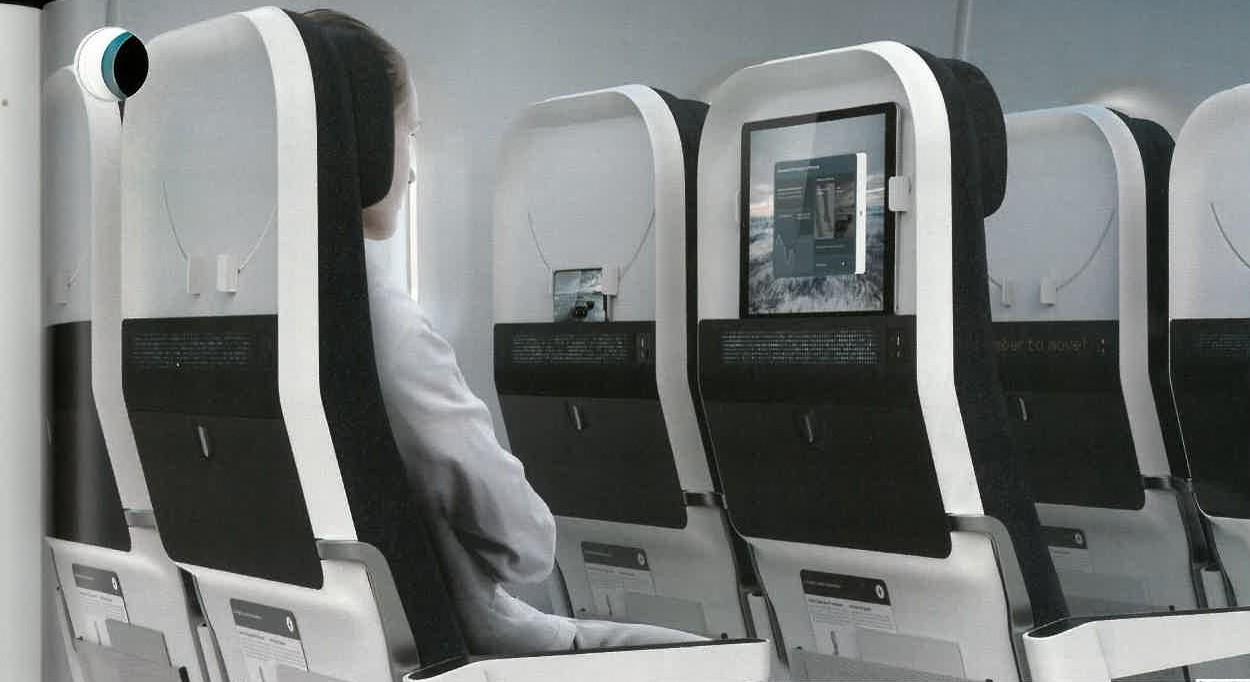ELEVATE
RELAX AND ENJOY YOUR FLIGHT

“Industry beware! This project highlights a real problem with real research that could lead to unique differentiation. The integrated design concept creates a universal solution that has been overlooked by the commercial industry.”
– Tor Alden, IDSA

Flying can be a stressful experience for any traveler, but older adults in particular often face add1t1onal psychological and physiological challenges that complicate their ability to travel. Deep vein thrombosis (DVT), a potentially life-threatening condition, is one such challenge. Older adults are at a higher risk of developing DVT within an airplane cabin than the average passenger. The ELEVATE Economy Class Active Seating System addresses this issue through tracking a person’s movements, informing them of long periods of inactivity and providing movement methods to increase blood flow, resulting in a reduced risk of DVT not only for older adults but the broader passenger population as well.
An array of force-sensing resistors embedded in the seat pan allow the system to accurately. monitor passenger movement and pinpoint periods of inactivity. Once the system recognizes a long period of inactivity, it notifies the person through a gentle haptic pulse and either a notification via the inflight app or the dot matrix information bar located on the seatback in front of them. Such redundancies ensure that it is accessible to people with specific impaired sensory modalities or those without a paired device.
Once notified, passengers are provided with various methods to increase blood flow to reduce the risks associated with DVT. Passengers paired with the app can either mimic seated exercises viewed on-screen or play interactive games. One such game involves the person steering a car through lifting and lowering their legs, making use of the sensors embedded in the seat as a controller. The game aspect of the design also opens ELEVATE to the broader demographic of passengers, who could all benefit from_ increased movement and the resulting refreshed feeling. For passengers without a paired device, the dot matrix display will use arrows to guide their attention to an information card in the seat pocket with various exercises to follow.
Studies have estimated that the number of travelers over the age of 65 is set to double within the next 30 years, meaning DVT is likely to· be more prevalent and affect a greater percentage of flyers. With this statistic in mind, there exists a significant opportunity for airlines to adopt the ELEVATE system to meet the needs of current and future travelers. In addition, with the lack of existing solutions currently implemented by airlines, ELEVATE is poised to disrupt the market and position the airline that adopts this system as an innovator in healthy traveling. Implementing ELEVATE would tap into this increasing customer base by integrating a system that meets their needs, ideally increasing flyer satisfaction and the likelihood of repeat customers. By preventing the occurrence of DVT, airlines could also reduce the likelihood of legal action against them from customers who experience the condition during or directly after a flight.
Designed by Robert Shudra of Carleton University
(INNOVATION, Fall 2019, Yearbook of Design Excellence)



